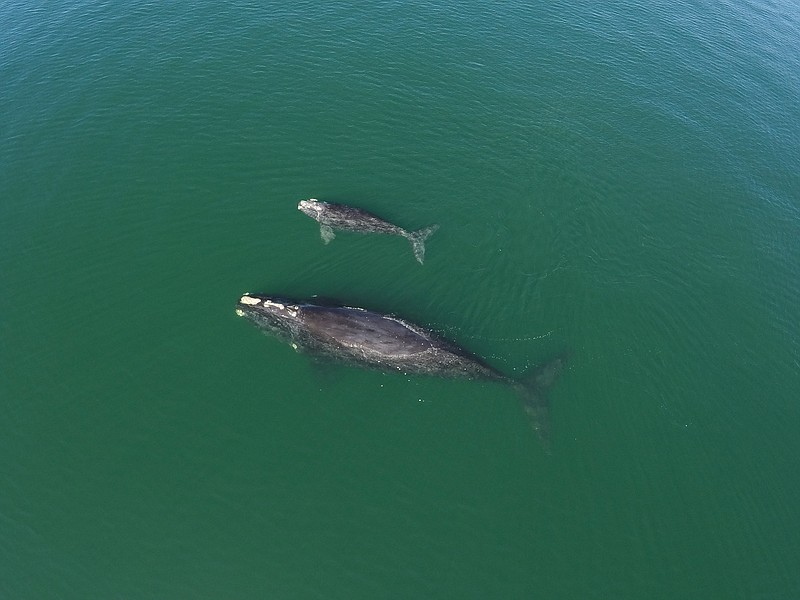Crowded into a tiny plane, 1,000 feet above the water off Georgia, the surveyors look down in search of a disturbance - a long splash, or a dark patch amid all that blue.
In the aberration, they might see nothing at all, or they could find dolphins, a turtle, a manta ray, some manatees.
If they're lucky, the surveyors will get what they are here for: a glimpse of a North Atlantic right whale, among the rarest in the world.
The pilot follows a track line, the last part of the last pass of Dec. 4. There are thought to be fewer than 400 of the right whales alive today and no more than 100 females that can breed.
Human hunters decimated the species. Now this high-stakes game of "I Spy," including three teams affiliated with the Clearwater Marine Aquarium Research Institute, is one part of an urgent mission to prevent these whales from blinking into extinction.
Survivors swim to the Southeast, from the Carolinas to Florida, for calving season. As long as 52 feet, as heavy as 140,000 pounds, they may live up to 70 years unencumbered.
The surveyors note each mother and precious calf they see, sending reports from sky to land. Within minutes, their dispatches are shared with shipping companies to broadcast out to sea, so captains can be cautious. Boat collisions are deadly, yet more pressure on the wrong end of the ecological scale.
The four surveyors come from Maine, Rhode Island, Georgia and Florida. All have some background in marine biology. From December to March, they fold themselves into National Oceanic and Atmospheric Administration Twin Otter planes, any day the weather is fair.
They can cover 300-400 nautical miles in about six hours, practicing moderate dehydration to avoid using the onboard toilet, which is just a tube. They crane their necks to look out bubble windows and unkink their aching limbs when they're back on solid ground. They live together at a house in Georgia.
When they see a whale, a slick shadow breaking through the Atlantic, one surveyor moves to a special pop-out window at the back of the plane, using a long camera lens to get a clear picture. The pilot traces expert loops to keep them in place.
Every North Atlantic right whale has a unique pattern of raised skin on its head, like calluses. This marking, similar to a fingerprint, allows the surveyors to identify each whale by number - and sometimes a name.
They get to know the animals they see regularly: like Nauset, who never stays at the surface, taking one breath before diving for 10 minutes at a time. No paparazzi, they think.
Over the months, they track not just whales but moments that remind them of the work's purpose.
Marcy Lee, 48, enjoys every first sighting of a mother and calf pair. The conservation project manager, Melanie White, 39, holds onto the day they saw seven pairs, as if for a few hours the whales were everywhere. Ashley Millan Ambert, 30, solemnly recalls the three hours they circled above the first entangled whale they saw, while colleagues on a boat below struggled to free it of fishing gear wrapped around its tail.
One calf they had spotted was later hit by a boat and killed, washing up on a beach in Florida. Soon after, they saw its mother, Infinity, swimming with a propeller wound to her side.
They hope for her survival. Saving one whale, they know, counts when there are so few.
David Lockwood, 26, had never seen a North Atlantic right whale, his previous trips to the New England coast - their usual feeding and mating grounds - leaving him only with cold fingers.
Then came the last few moments of this day in early December, the end of a shift to remember. The surveyors looked down and saw Chiminea, a whale who seems to like floating leisurely at the surface.
She lingered. Chiminea was beautiful, Lockwood thought, gentle and graceful.
Maybe such a whale just has to be seen to be understood. To be felt. So few people will.
White, the team's leader, tries to describe it.
"Think," she said, "about everything you're surrounded by. What do you know that there's less than 400 of in the entire world?"

